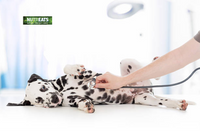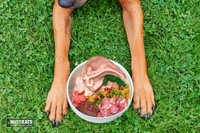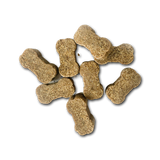Nourishing Your Toothless Dog: A Guide to Feeding and Care
Ben WintersCaring for a dog with missing or no teeth requires thoughtful attention to their dietary needs, to ensure they continue to live a long and happy life.
Despite the challenges, with the right approach, your toothless canine can enjoy a fulfilling diet that meets all the nutritional requirements.
Understanding Tooth Loss in Dogs
Dogs may lose teeth for various reasons, including age-related decay and periodontal disease. Tooth loss isn't exclusive to senior dogs; younger canines might also undergo tooth extractions due to dental issues.
While it might seem drastic, removing diseased teeth is often necessary to prevent pain and potential infection spread to vital organs. Interestingly, dogs without teeth can lead lives just as long as those with a full set, provided they receive proper care and nutrition.

Choosing the Right Diet for your Toothless Dog
Once your dog loses teeth, it's essential to consult a veterinarian to determine the best dietary plan. They might recommend a supplementing the dog's diet with supplements rich in necessary nutrients.
Soft Food Solutions.
For dogs lacking teeth, softening their regular kibble can make a significant difference. Soaking the kibble in warm water, chicken, or beef broth transforms it into an easily consumable meal without altering its familiar taste. This method also applies to dogs missing key chewing teeth, providing a comfortable transition to a softer diet.
Canned wet food is another excellent choice, offering a variety of flavors to cater to your dog's preferences. Ensure the wet food is free from large chunks, or mash them up to facilitate easier consumption. Patience is key, as some dogs might initially be hesitant to eat post-tooth loss but usually resume normal eating habits soon after.
Maintaining Oral Hygiene in Dogs with no teeth.
Oral care remains crucial even in the absence of teeth. Regularly applying a Chlorhexidine solution to your dog's mouth helps prevent infections, ensuring a healthy oral environment. For dogs with remaining teeth, brushing before the Chlorhexidine application is advisable to maximize oral hygiene.
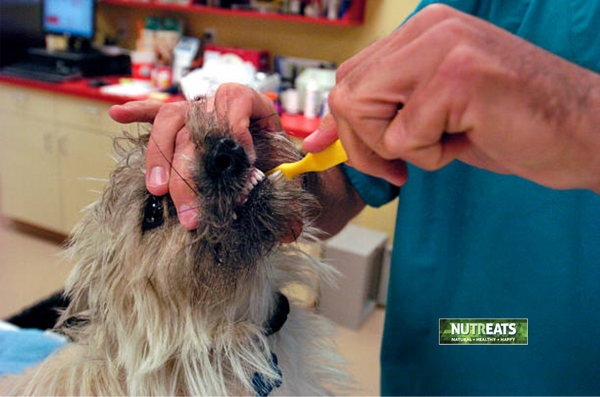
Adapting Your Dog's Meals for Comfort and Nutrition
After addressing the initial concerns of feeding a dog with no teeth, it's important to focus on long-term meal adaptation to ensure they receive all the essential nutrients for a healthy life. This adaptation involves not just choosing the right type of food, treats or supplements but also preparing it in a way that makes eating an easy and enjoyable experience for your toothless dog.
Transitioning your Dog to Soft Foods
Transitioning your dog to a soft food diet requires a bit of experimentation to find what works best. Whether you opt for moistened kibble or canned wet food, the goal is to present the meal in a mushy, easily consumable state.
This doesn't mean your dog has to miss out on variety; many brands offer a range of flavors and ingredients in their wet food lines, allowing you to keep your dog's meals exciting and palatable.
The Importance of Meal Consistency
Achieving the right consistency is key to ensuring your dog can eat comfortably and effectively. The food should be soft enough to swallow without chewing but still hold enough texture to be appetizing.
For dogs that enjoyed crunchier textures, finding a balance that keeps them interested in their food without causing frustration or discomfort is essential.
Supplementing Your Dog's Diet
While soft foods can provide the basis of a toothless dog's diet, they may need additional supplements to meet their nutritional needs fully. Consult with your veterinarian about integrating supplements that support overall health, focusing on those that aid digestion, skin, coat health, and joint support, especially in older dogs.
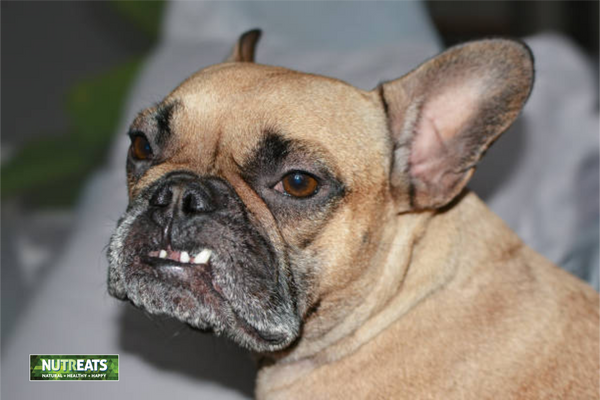
Encouraging Hydration
Hydration is another critical aspect of your dog's health that shouldn't be overlooked. Soft foods and wet diets generally contribute to your dog's water intake, but ensuring they have constant access to fresh water is essential. Some dogs may require encouragement to drink enough water, so consider adding water or broth to their meals to increase their fluid intake.
Transitioning your dog to a soft diet is a pivotal step for those with missing or no teeth, aiming to provide them with the necessary nutrients in a form they can easily consume.
Here are strategies for a smooth dietary transition and maintaining overall health:
Gradually introducing the new, softer diet can help your dog adjust without digestive issues. Begin by mixing a small portion of the soft food with their usual diet, gradually increasing the proportion of soft food. Warming the food to just above room temperature can make it more aromatic and enticing, but it's important to ensure the food is not too hot to prevent any discomfort.
Achieving the right food consistency, akin to porridge, enables your dog to eat easily without the need for chewing. This consistency ensures that they can lap up their food comfortably, getting all the nutrition they need.
As you navigate this dietary shift, it's also essential to focus on the nutritional content of the soft diet.
Opting for high-quality commercial foods designed for dogs with dental issues, as these are formulated to offer balanced nutrition. Depending on your dog's health, your veterinarian may suggest incorporating specific supplements into their diet, such as glucosamine for joint health or omega-3 fatty acids for skin and coat quality.
Feeding Soft Chews to your Dog as a Dietary Supplement
For dogs with missing or no teeth, maintaining a balanced diet is essential, and incorporating soft chews as a dietary supplement can play a significant role in this balance.
Soft chews are an excellent way to ensure your dog receives all the necessary nutrients, vitamins, and minerals that might be missing from their primary diet, especially when they are on a soft food regimen.
Soft chews are specifically formulated to be gentle on the dog's gums and easy to consume, making them an ideal option for dogs without teeth. These supplements support a range of health benefits, from supporting joint health with ingredients like glucosamine and chondroitin to enhancing skin and coat quality with omega-3 fatty acids. Furthermore, certain chews are designed to promote calmness and support the nervous system, containing ingredients such as L-theanine and chamomile.
When selecting soft chews for your dog, it's important to choose products made with natural, high-quality ingredients and to avoid those with artificial additives or fillers.
The goal is to supplement your dog’s diet in a way that supports their overall health without introducing unnecessary chemicals or preservatives.
While soft chews can be given as a treat, their primary purpose is to supplement your dog’s diet with additional nutrients. Therefore, it's crucial to adhere to the recommended dosages on the product packaging to prevent over-supplementation, which could lead to nutritional imbalances.
In addition to their nutritional benefits, soft chews can also serve as a form of enrichment for your dog. The act of consuming a tasty chew can provide mental stimulation and reduce boredom, especially for dogs that may find eating their regular soft food less engaging due to the lack of chewing involved.


